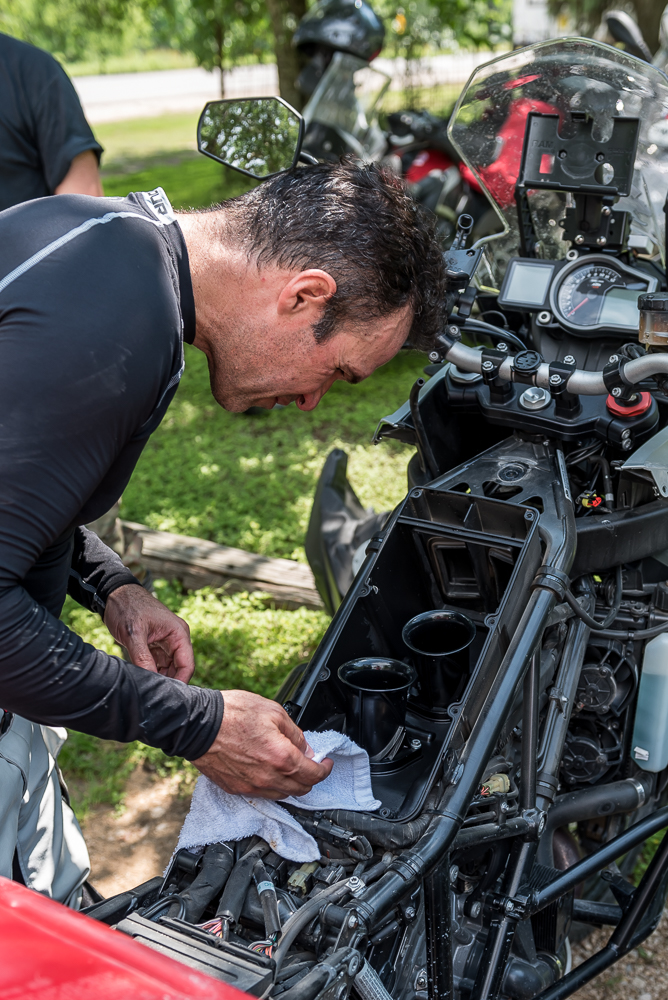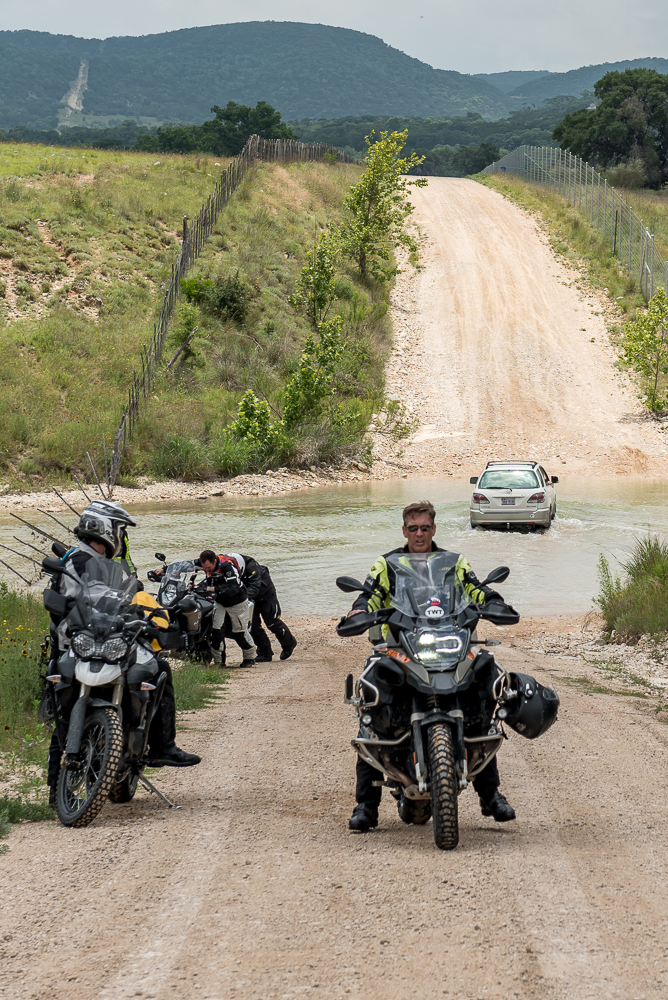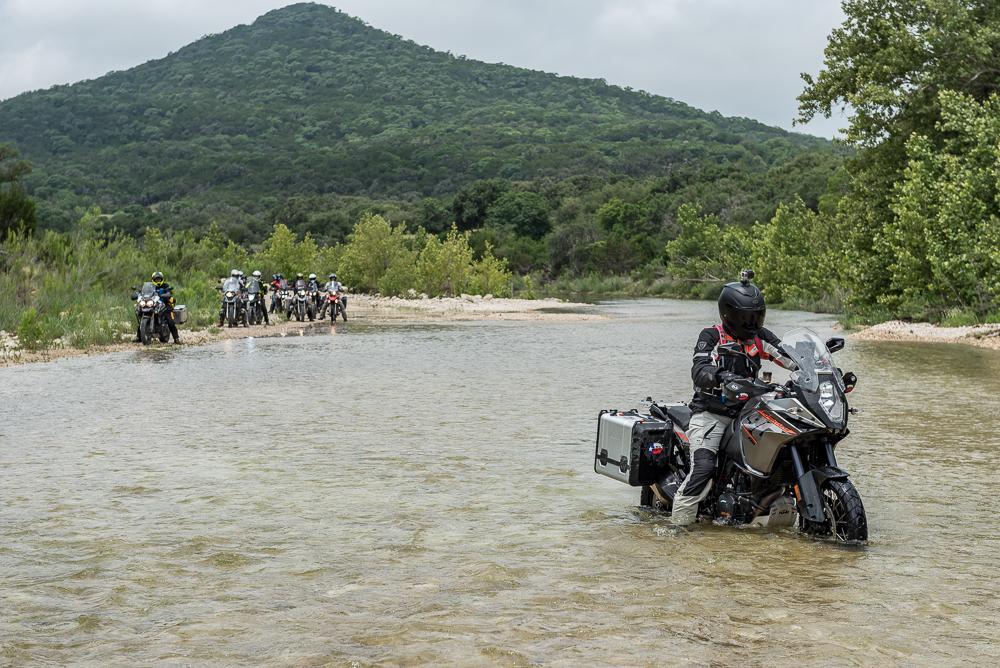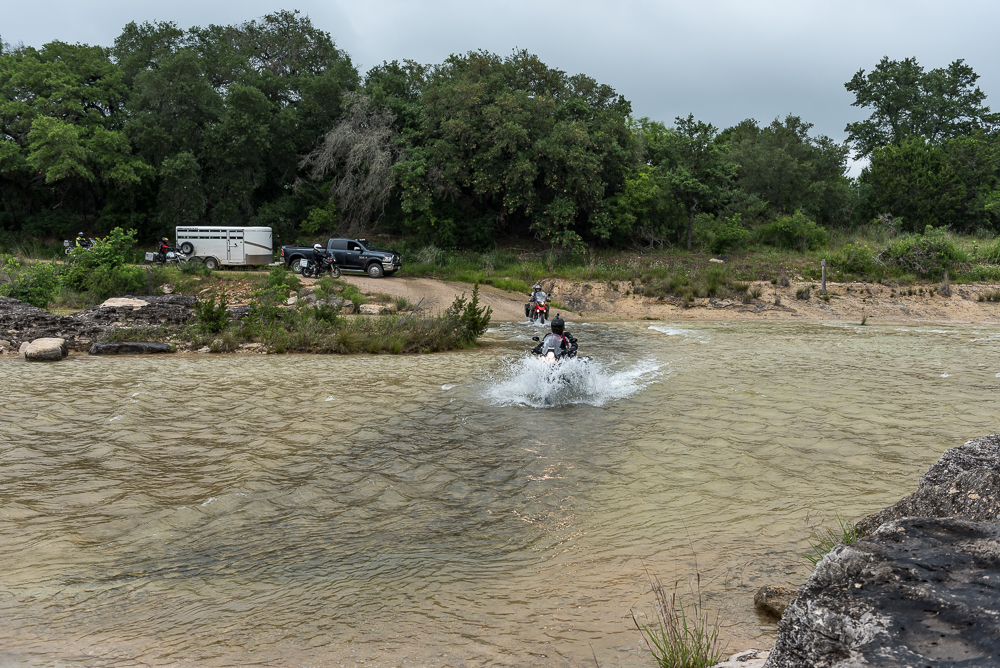- Joined
- Feb 28, 2003
- Messages
- 51,257
- Reaction score
- 8,288
- Location
- Huntsville
- First Name
- Scott
- Last Name
- Friday
Well... after this past weekend in the Hill Country, Kromy67 can now tell you what is involved with restarting a hydro-locked 1190 
What is crazy is that he ingested the water despite not going down and never going through water that was up to the intakes. Apparently, enough was able to simply splash in during a short crossing to flood the rear cylinder.
What is crazy is that he ingested the water despite not going down and never going through water that was up to the intakes. Apparently, enough was able to simply splash in during a short crossing to flood the rear cylinder.



 Feel free to hang out and lurk as long as you like. However, we would like to encourage you to
Feel free to hang out and lurk as long as you like. However, we would like to encourage you to 



 . Looking at my bike pics during the repair the light came to me and realized the “second” cylinder is lower so its stack and that’s why there was more water in it.
. Looking at my bike pics during the repair the light came to me and realized the “second” cylinder is lower so its stack and that’s why there was more water in it.


